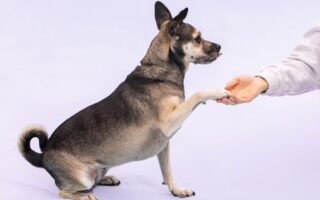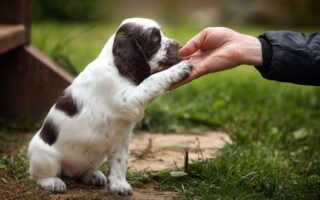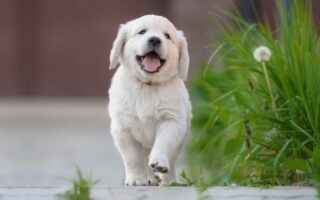Potty training a puppy can often feel like a daunting task for new pet owners, filled with uncertainty and a flurry of questions. However, it doesn’t have to be a struggle! With the right approach, a gentle hand, and a sprinkle of patience, you can guide your furry friend toward successful potty habits. In this article, we will explore the easiest methods to potty train your puppy, breaking down essential techniques and helpful tips that will make the process smoother for both you and your pup. Get ready to embark on a rewarding journey that not only fosters good behavior but also strengthens the bond between you and your canine companion. Let’s dive into the world of potty training and set your puppy on the path to success!
Table of Contents
- Understanding Your Puppy’s Needs for Effective Potty Training
- Creating a Consistent Routine to Promote Good Habits
- Positive Reinforcement Techniques to Encourage Success
- Common Challenges and Solutions in Puppy Potty Training
- Q&A
- Wrapping Up
Understanding Your Puppy’s Needs for Effective Potty Training
The key to successful potty training hinges on understanding your puppy’s specific needs and behaviors. Each puppy is unique, and recognizing their signals can simplify the process significantly. Pay attention to their body language; for instance, a puppy may start sniffing around or pacing when they need to go. Establish a routine by taking them outside at regular intervals—first thing in the morning, after meals, and before bedtime—to help them learn when and where to relieve themselves. Consistency will build their confidence, creating positive associations with bathroom breaks outdoors.
Additionally, creating a comfortable environment inside your home can enhance the potty training experience. Designate a specific area for your puppy to rest and play, away from their potty space. This helps instill a sense of security and encourages them to recognize the boundaries of their living space. Consider using a puppy pad or a designated indoor area during inclement weather, offering them options while reinforcing the outdoor routine. Remember to follow these guidelines:
- Monitor food and water intake: Know when your puppy eats and drinks to predict potty intervals.
- Reward and praise: Positive reinforcement helps solidify good behavior.
- Avoid punishment: This can create anxiety and confusion, hindering progress.
Creating a Consistent Routine to Promote Good Habits
Establishing a reliable schedule is essential for guiding your puppy towards successful potty training. When your furry friend knows when to expect bathroom breaks, they’re more likely to develop a natural rhythm for their bodily functions. Aim to take your puppy outside first thing in the morning, after meals, and before bed. Consistency is key, so you might consider keeping a simple checklist to help you track these routines:
- Morning wake-up
- Post-meal
- Midday playtime
- Evening wind-down
- Pre-bedtime
In addition to your timing, reinforcing positive behavior will help solidify these good habits. Every time your puppy successfully goes potty outside, offer immediate praise and a small treat to reward their success. This reinforcement not only promotes good habits but also builds a strong bond between you and your pup. To help visualize your training plan, here’s a simple table that outlines the ideal schedule:
| Time | Activity | Reward |
|---|---|---|
| 7:00 AM | Morning bathroom break | Verbal praise + treat |
| After Meals | Bathroom break | Verbal praise + treat |
| 3:00 PM | Afternoon playtime | Verbal praise + treat |
| Before Bed | Nightly bathroom break | Verbal praise + treat |
Positive Reinforcement Techniques to Encourage Success
Potty training your puppy can be a rewarding experience, especially when utilizing positive reinforcement techniques to motivate and encourage good behavior. One effective method is to reward your puppy immediately after they do their business outside. This can include treats, verbal praise, or even a few minutes of playtime. The goal is to make the experience enjoyable and memorable for your puppy, helping them associate bathroom breaks outdoors with positive outcomes.
Establishing a consistent schedule is crucial; take your puppy outside after meals, naps, and play sessions. In addition to immediate rewards, consider creating a chart to track your puppy’s progress. This not only helps you maintain a routine, but it also allows you to visually celebrate their achievements:
| Day | Bathroom Breaks | Rewards Given |
|---|---|---|
| Day 1 | 4 | 2 Treats, 1 Play Session |
| Day 2 | 5 | 3 Treats, 1 Extra Play Session |
| Day 3 | 6 | 4 Treats, 2 Play Sessions |
Incorporating these techniques will not only make the training process smoother but will also strengthen the bond between you and your puppy, setting them up for long-term success!
Common Challenges and Solutions in Puppy Potty Training
Puppy potty training can present a myriad of challenges for new pet owners. One common hurdle is understanding a puppy’s natural instincts. Puppies often have a strong urge to eliminate after eating, drinking, or playing. If you miss these critical moments, accidents are likely to happen. This can lead to frustration for both the puppy and the owner. Additionally, inconsistent schedules or lack of supervision can contribute to confusion and setbacks in the training process. To mitigate these issues, establish a consistent feeding and potty schedule while closely monitoring your puppy’s behavior.
Another challenge is managing accidents that occur inside the home. Instead of reacting with anger or punishment, which can harm the bond between you and your puppy, focus on positive reinforcement. Whenever your puppy successfully goes outside, reward them with praise or a small treat. This helps reinforce the desired behavior. A useful tool is a designated potty area in your yard, helping your puppy learn where it’s acceptable to eliminate. Keep in mind that patience and persistence are key, and keeping a log of your puppy’s potty habits may help identify patterns and triggers.
Q&A
Title: The Easiest Way to Potty Train a Puppy: Your Essential Q&A Guide
Q1: Why is potty training important for a puppy?
A: Potty training is crucial not only for maintaining a clean home but also for establishing good habits in your puppy. A well-trained puppy understands where to relieve itself, which helps prevent accidents and fosters a sense of security in its environment. Plus, potty training builds the foundation for a trusting relationship between you and your furry friend!
Q2: What is the best age to start potty training my puppy?
A: The magic number is typically around 12 to 16 weeks of age. At this stage, puppies are more capable of controlling their bladder and can start to learn where it’s appropriate to relieve themselves. However, older puppies and even adult dogs can learn, so don’t fret if your pup is a bit older!
Q3: What are the most effective methods for potty training?
A: There are several tried-and-true methods for potty training:
- Crate training: Use a crate as a safe space and a tool for house training. Dogs instinctively avoid soiling their sleeping area.
- Frequent outdoor trips: Take your puppy outside regularly, especially after meals, playtime, and waking up. Puppies usually need to relieve themselves.
- Positive reinforcement: Reward your puppy with treats and praise immediately after they do their business outside. This helps them associate the act of going outside with positive outcomes.
- Consistent schedule: Establish a routine for feeding, watering, and bathroom breaks. Consistency helps your puppy recognize when it’s time to go outside.
Q4: How can I tell when my puppy needs to go outside?
A: Watch for signs that your puppy needs to relieve itself, such as:
- Sniffing around or circling
- Whining or barking
- Looking anxious or restless
- Heading toward the door or scratching at it
Learning to read these cues can help prevent accidents inside the house!
Q5: What should I do if my puppy has an accident indoors?
A: First, don’t panic! Accidents happen, especially during the learning process. Here are steps to take:
- Stay calm: Instead of scolding your puppy, simply clean up the mess thoroughly to eliminate lingering odors. This prevents your pup from returning to the same spot.
- Prevent access: Keep your puppy in a controlled area when you can’t supervise them directly to minimize the chance of accidents.
- Revisit your training: Reflect on your schedule and routine. You may need to take your puppy out more frequently or refine your signals and rewards.
Q6: How long does potty training usually take?
A: Each puppy is unique, so the duration can vary. Some puppies may grasp the concept within a few weeks, while others may take a few months. Patience and consistency are key. Remember, practice makes perfect—you and your puppy will get there together!
Q7: Can I use puppy pads? When should I introduce them?
A: Puppy pads can be useful, especially in apartments or during inclement weather. Use them if you’re unable to take your puppy outside frequently, but keep in mind that transitioning from pads to outdoor potty trips may take extra effort. If you choose this method, start moving the pads closer to the door as your puppy becomes more accustomed to going outside.
Q8: What if my puppy is not responding to potty training?
A: If your puppy seems resistant to training, don’t lose hope! Reassess your approach, ensure you’re being consistent, and revisit your schedule. If needed, consult a professional trainer or veterinarian for additional tips and support—they can provide personalized advice tailored to your pup’s needs.
Remember, every puppy is different, and adaptability is essential. With patience and commitment, you’ll pave the path to a well-trained, happy companion! Happy training!
Wrapping Up
As you embark on the journey of potty training your puppy, remember that patience and consistency are your best allies. Every wagging tail and joyful bark adds to the bond you share, making the effort worthwhile. With the right techniques, gentle encouragement, and a sprinkle of love, you can help your furry friend grasp the concept of going potty outside in no time. Embrace the small victories along the way, and don’t forget to celebrate your puppy’s progress—after all, each trip outdoors is a step toward a well-trained companion. Happy training! Your puppy’s brighter, cleaner future is just around the corner.



